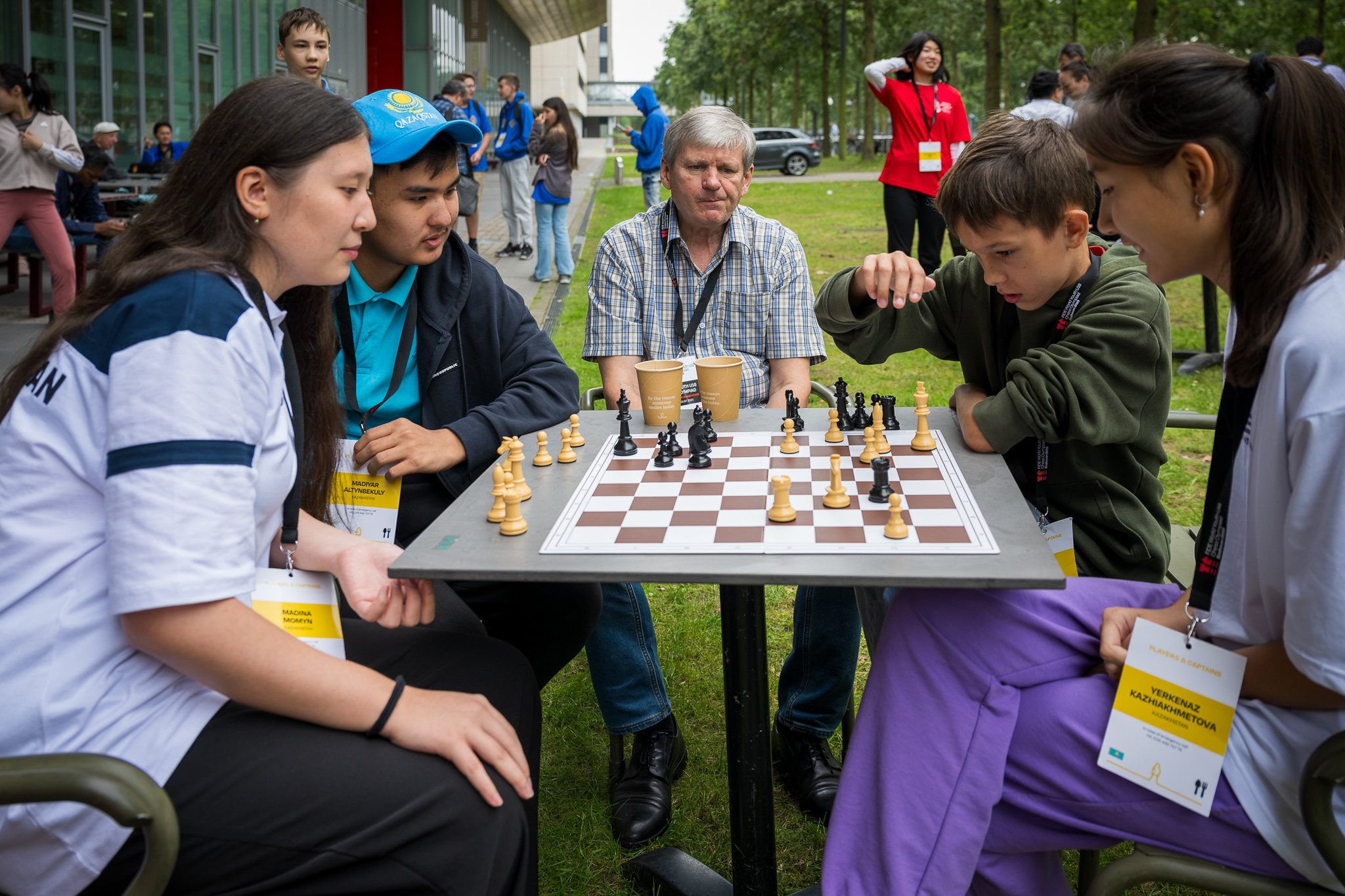After 4 rounds Marsel Efroimski was the sole leader. In round 5 she was overtaken by Josefine Heinemann. The German player beat Marta Garcia Martin with Black to leap ahead with 4 out of 5.
Just like in round 2 Josefine adopted the Najdorf. Marta came well prepared and her position after 11.g4 looked rather attractive. Things started to go wrong for the Spanish IM when after 16…f5 she took the pawn en passant. It was much better to play 17.0-0-0 (…f5-f4 is never a threat), when she can claim an edge with her two bishops. With Heinemann’s dark-squared bishop on the long diagonal Black always has enough counterplay. Things went from bad to worse with 20.b4? when White had an extra pawn but a very unsafe king. For a human being such positions are hardly defensible. Black crashed through with 28…Rxf2+.
In Petra Papp-Anastasia Avramidou both players did their utmost to surprise the opponent in the opening. Rightly fearing preparation in a Sicilian Four Knights the Hungarian player opted for the innocuous 7.Bd3 which paid off nicely when Black played 7…e5 (7…d5) in combination with 8…Bc5 (8…Be7 was still fine). On c5 the bishop becomes a target for the typical plan Na4 and c4. In a middlegame without queens White was pressing in view of Black’s multiple weaknesses (isolated pawns and weak squares). 24.Ba5 followed by 25.Rac1 would have been strong, but the first real mistake was trading one pair of rooks (27.Rc2 and doubling on the c-file was much better). Avramidou created counterplay with …g5-g4: from now on pawn e4 is also weak. The worst was over now, and the players soon found themselves in a semi-forced repetition.
The Sveshnikov Sicilian appeared to surprise Machteld van Foreest and she ended up in a strategically inferior position against Trisha Kanyamarala. In the position after 18…f5 Black not only has typical Sveshnikov-play: the opposite-coloured bishops enhance the attacking chances even further. Trisha’s 20…bxa4 was slightly unnecessary, although she continued to press. Machteld gained enough counterplay with 31.Bc8 and 33.h4 to hold on to the draw.
Laura Unuk-Robin Duson was an exciting affair. Laura went for a Jobava system with 1.d4 Nf6 2.Nc3 d5 3.Bf4 e6 4.Nb5. Robin was on her own from the start, but she managed to find all the right moves (unknowingly following a Jorden van Foreest-Anish Giri game). Black got excellent play when Laura played h5-h6 too soon. Instead of 17…Bb4, 17…Bd7 and 18…b5 would have been very powerful. Robin played too ambitiously with 25…e5? which Laura refuted. In positions with heavy pieces the most vital element is king safety. Laura demonstrated that her king on e3 was much safer than Black’s king on g8.
Last but not least the game between Marsel Efroimski and Alicja Sliwicka. In a quiet Italian Game things were even until Alicja played 24…Ra8? where 24…Rb8 was indicated. Marsel correctly went 25.d4! but missed the slightly surprising 26.Bxd4! for an edge. After 26.Nxd4 things were equal again, although optically one can’t blame her for playing for more. In actual fact White was in no position to gain an edge, and Alicja took over with 32…Rc4 and 33…Qe6. On move 39 Black already had two extra pawns. Marsel was unlucky that she had to take a vital decision on move 40: 40.Rb7 (cutting off the Black king) gives very real chances for a draw. After 40…Kf7! Alicja had freed her monarch and defeated the leader.


